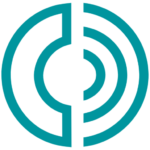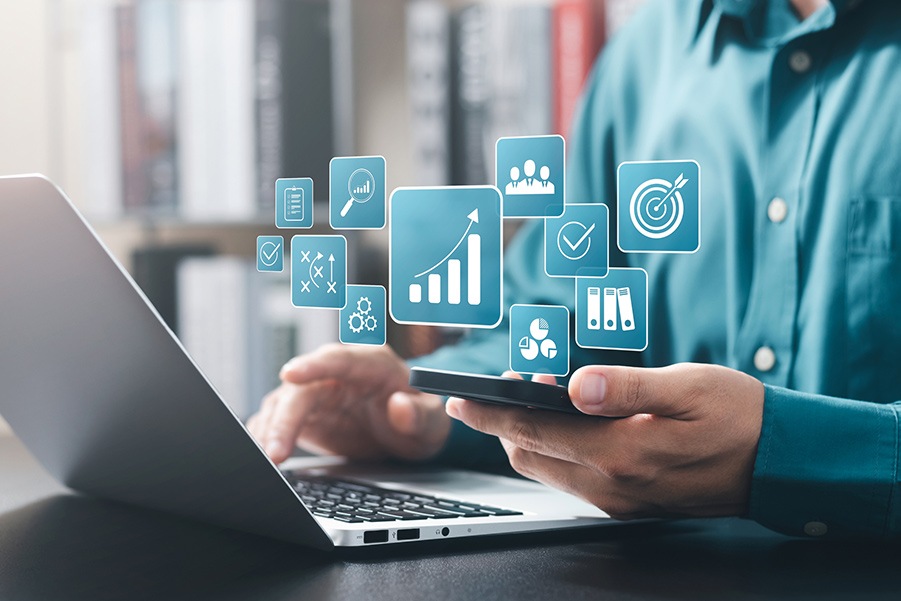Call center agents are the heart of customer service. They handle calls, generate leads, and close deals. It’s a demanding job, where every second counts. In this fast-paced environment, call center managers need a clear picture of how their team is doing and where there’s room to grow. That’s where Key Performance Indicators (KPIs) come in.
By tracking the right call center metrics, you can gain valuable insights into your team and processes, identify areas for improvement, and help your agents perform their best. And when your agents are performing at their peak, everyone benefits: happier customers, increased sales, and a healthier bottom line.
Ready to unlock your call center’s full potential? Keep reading to discover the 8 must-track call center KPIs that will help you boost productivity and take your team to the next level.
What Is a KPI?
In the simplest terms, a Key Performance Indicator (KPI) is a metric that demonstrates how effectively a company is achieving its key business goals. Think of KPIs as signposts on the road to success: they tell you whether you’re heading in the right direction and how close you are to your destination.
In the context of a call center, KPIs can track a wide range of factors, from agent productivity to customer satisfaction. By monitoring these KPIs, managers can gain a real-time understanding of their team’s performance, identify areas of strength and weakness, and make data-driven decisions to improve overall efficiency and effectiveness.
8 Important Call Center KPIs to Track
While the most relevant KPIs can vary depending on your specific goals, industry, and customer base, there are 8 core metrics that offer valuable insights for virtually every call center.
1. Lead Conversion Rate
Lead conversion rate is simply the percentage of leads (potential customers) that turn into actual paying customers. For example, if you have 100 leads and 10 of them make a purchase, your lead conversion rate is 10%.
This call center KPI is important to measure for a couple reasons. If your conversion rate is high, you can examine what sales and engagement tactics worked in those interactions and replicate them with new prospects.
Low conversion rates, on the other hand, are a cost to your productivity and bottom line. Tracking these can help you spot whether the solution needs to come from fresh sales training or gathering new leads.
To calculate your lead conversion rate, divide the number of leads who became customers by the total number of leads, then multiply it by 100 to get a percentage.
Formula: Lead Conversion Rate = (Number of Converted Leads / Total Number of Leads) x 1002. Connection Rate
Connection rate tells you how many calls were answered out of your total leads. Track it on a daily basis, and you’ll get a good idea of how effective your targeting is—doing this per agent will help you further understand how they’re performing.
Your agents might be the best, but they can only go so far without quality prospects. Of all your call center analytics, keep an eye on this one to figure out if you need to sharpen your lead generation.
You can calculate connection rate by dividing the number of successfully connected calls (those answered by a person or that reached voicemail) by the total number of calls attempted, multiplying it by 100 for the percentage.
For instance, if your call center agents attempted 500 calls and 150 of those calls were connected, you would have a connection rate of 30%.
Formula: Connection Rate = (Number of Connected Calls / Total Number of Calls Attempted) x 1003. Call Length
Call length, also known as call duration or talk time, is simply the amount of time an agent spends on a call with a customer. It’s usually measured in minutes and seconds, and it includes the time spent talking, as well as any hold time or transfers.
Tracking how long agents spend talking with customers and prospects on the phone can reveal a few aspects of their performance. Some calls take extra care to land a sale—and if your agents are at a stage of developing relationships, longer calls can suggest more in-depth and satisfying customer interactions.
If they’re in the discovery or problem-solving stage, however, then your reps might benefit from more support to quickly address customer needs. When tracked over time, this metric can give you an accurate impression of each agent’s performance.
Calculating call length is straightforward. It’s simply the difference between the time a call ends and the time it began.
Formula: Call Length = Call End Time - Call Start Time4. Wait or Pause Time
This call center KPI tells you how long your reps spend resting between calls. It’s important to let your agents take a breather to stay on top of their game, but you can’t let a potential sale slip through your fingers. Track wait time along with other agent stats to get a good sense of how long your people need to recharge and stay productive.
To calculate the time agents spend resting between calls, which is also referred to as “idle time,” you’ll need to look at the time between the end of one call and the start of the next. This usually requires call center software or workforce management tools that can track agent status and call activity.
The formula below is a conceptual way to think about it, where Wrap Time is any necessary task the agent performs immediately after a call ends, but before they are available for the next call (more on this next).
Formula: Wait or Pause Time = (Time Call Started - Time Previous Call Ended) - Wrap Time5. Wrap Time
An agent’s work doesn’t stop once they’re off the phone—making call notes, sending emails, updating databases, and other admin tasks all take time. Wrap time, also known as after-call work or post-call processing, is the time an agent spends on these activities after the customer has disconnected.
Tracking wrap-up activity lets you determine how much time to allocate for post-call work, and helps you see which of these tasks can be automated to keep your agents dialing. Using a single tool for these tasks can increase productivity even further. In fact, according to CMSWire, 70% of agents rank navigating multiple tools as their number one productivity challenge.
Wrap time is typically calculated automatically by call center software or workforce management tools. These systems can track when an agent finishes a call and then logs back into an available status, ready to take the next call.
Formula: Wrap Time = Time Agent Becomes Available Again - Time Call Ends6. Calls per Agent
Calls per agent is a metric that measures the average number of calls handled by each agent within a specific time period. This shows how efficiently your agents are dialing. While call length, wait time, and wrap time all reasonably affect how many calls your reps place, this is a helpful call center metric to track as abnormally high or low call figures can point to issues with productivity or call quality.
Tracking this metric requires a simple formula that compares the total number of calls the agent placed to the total number of hours the agent worked.
Formula: Average Calls Per Agent Per Hour = Total Number of Calls / Total Hours Worked7. Hold Time
Placing customers on hold is perfectly natural—but if hold times grow too long, your prospects’ patience will wear thin, causing them to abandon calls. Monitor your hold times to identify how long is “too long,” and set targets based on that. Tracking this will help you better organize your agents’ availability to make and handle calls, and prevent customer loyalty from crashing due to wait times.
Calculate hold time by subtracting the time the call is answered from the time the agent connects with the customer. For example, if a customer’s call is answered at 9:00 AM and they are connected to an agent at 9:03 AM, their hold time would be 3 minutes.
Formula: Hold Time = Time Agent Connects with Customer - Time Call is Answered8. Abandon Rate
Abandoned calls are calls that are ended by the caller before they reach an agent or complete their intended action. This can happen for a few reasons, but they’re often due to hold and wait times.
These calls represent lost leads, and they can also point to issues with your dialer settings that prevent these calls from going through. You’ll want your abandon rate to be as low as possible, but it’s still a good idea to track it and identify the cause.
To calculate abandon rate, you’ll need to divide the number of abandoned calls by the total number of calls attempted within a specific time period. You can then multiply this number by 100 to get the percentage. Pro tip: Leave out the first few seconds of calls to screen out incorrect and wrong number dials.
Formula: Abandon Rate = (Number of Abandoned Calls / Total Number of Calls Attempted) x 100Next Steps
Now that you know the key call center KPIs to track, it’s time to take action. Tracking these essential KPIs is the first step towards success—and with Readymode™, it’s easier than ever.
Our customizable dashboards put the power of data at your fingertips, providing real-time insights into the metrics that matter most. Identify areas for improvement, track progress over time, and empower your agents to deliver exceptional customer experiences.
Want a quick reference guide to keep these KPIs top of mind? Get our free eBook today and start your journey towards a more productive and successful call center!
Readymode
About Readymode®
Readymode is a cloud-based, outbound customer engagement platform for sales teams. Our all-in-one platform empowers businesses to engage smarter, connect more, and grow their revenue. Along with an industry-leading predictive dialer, our outbound calling solutions include advanced features like fully integrated CRM, built-in compliance tools, and real-time reporting and analytics. Readymode is at the core of the conversation; we’re designed for businesses that want to maximize productivity and scale affordably.








